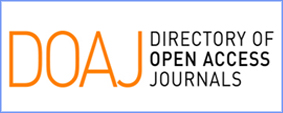Students’ Mathematical Connection Error in Solving PISA Circle Problem
Abstract
The mathematical connection is one of the competencies in NCTM that students need to have. Mathematical connections can help students understand material and mathematical concepts easily. In addition, mathematical connections can help students in solving mathematical problems. Even so, mathematical connection errors are still made by some students. Mathematical connection errors made by students when solving geometry problems, especially about a circle. The purpose of this study is to describe the mathematical connection errors made by students in solving problems adapted from PISA problems focusing on circle material. This research method is descriptive-qualitative. Prospective subjects are 20 of 8th-grade students in one of the junior high schools in Malang who have studied about a circle. Based on the distribution of answers, two subjects were selected in this study. After going through the interview process, the data obtained in the form of work results and interview transcripts. Based on the results of research, mathematical connection errors made by research subjects in the form of not being able to use mathematics in mathematical problems; can't find connections between topics in mathematics; unable to understand the representation of concepts in mathematical problems, and draw relationships between procedures on mathematical problems
Keywords
Full Text:
PDFReferences
Adolphus, T. (2011). Problems of teaching and learning of geometry in secondary schools in Rivers State, Nigeria. International Journal of Emerging Sciences, 1(2), 143–152.
Apriliawan, A., Gembong, S., & Sanusi, S. (2013). Analisis Kesalahan Penyelesaian Soal Uraian Matematika Siswa MTs pada Pokok Bahasan Unsur-Unsur Lingkaran. JIPM (Jurnal Ilmiah Pendidikan Matematika), 1(2). 120-127.
Edo, S. I., Ilma, R., & Hartono, Y. (2013). Investigating Secondary School Students’ Difficulties in Modeling Problems PISA-Model Level 5 And 6. Journal on Mathematics Education, 4(1). 41-58. https://doi.org/10.22342/jme.4.1.561.41-58
Fabiyi, T. R. (2017). Geometry Concepts in Mathematics Perceived Difficult To Learn By Senior Secondary School Students in Ekiti State, Nigeria. IOSR Journal of Research & Method in Education (IOSRJRME), 07(01), 83–90. https://doi.org/10.9790/7388-0701018390
Fauzi, M. A. (2015). The Enhancement of Student ’ s Mathematical Connection Ability and Self-Regulation Learning with Metacognitive Learning Approach in Junior High School. 7th International Conference On Research And Educations In Mathematics (ICREM7), 1–6.
Gal, H., & Linchevski, L. (2010). To see or not to see: analyzing difficulties in geometry from the perspective of visual perception. Educational Studies in Mathematics, 74(2), 163–183. https://doi.org/10.1007/s10649-010-9232-y
Hidayati, V. R., Subanji, & Sisworo. (2017). Analisis Kesalahan Siswa SMP dalam Menyelesaikan Masalah Matematika PISA pada Tahapan Penyelesaian Blum-Leiss. Prosiding Seminar Nasional Pendidikan Matematika, 108–119. Malang: Program Studi Pendidikan Matematika Pascasarjana Universitas Negeri Malang.
Lestari, A. P., Hasbi, M., & Lefrida, R. (2016). Analisis Kesalahan Siswa Kelas IX dalam Menyelesaikan Soal Cerita Keliling dan Luas Lingkaran di SMP Al-Azhar Palu. Jurnal Elektronik Pendidikan Matematika Tadulako, 3(4), 373–385.
Lestari, K. E. (2014). Implementasi Brain-Based Learning untuk Meningkatkan Kemampuan Koneksi dan Kemampuan Berpikir Krtitis serta Motivasi Belajar Siswa SMP Karunia. Jurnal Pendidikan Unsika, 2(1), 36–46.
Mousley, J. (2004). An aspect of mathematical understanding: The notion of “connected knowing.” Proceedings of the 28th International Conference of the International Group for the Psychology of Mathematics Education, 3, 377–384.
NCTM. (2000). Principals and Standards for School Mathematics. United States of America: The National Council of Teachers of Mathematics, Inc.
Özerem, A. (2012). Misconceptions In Geometry And Suggested Solutions For Seventh Grade Students. Procedia - Social and Behavioral Sciences, 55, 720–729. https://doi.org/10.1016/j.sbspro.2012.09.557
Prihastanto, A. R., & Fitriyani, H. (2017). Profil Kemampuan Koneksi Matematis Siswa SMP yang Bergaya Kognitif Reflektif-Impulsif dalam Menyelesaikan Soal Geometri. Didaktika, 23(2), 89–98.
Rohendi, D. (2012). Developing E-Learning Based on Animation Content for Improving Mathematical Connection Abilities in High School Students. IJCSI International Journal of Computer Science, 9(4), 1–5.
Rohendi, D., & Dulpaja, J. (2013). Connected Mathematics Project (CMP) Model Based on Presentation Media to the Mathematical Connection Ability of Junior High School Student. Journal of Education and Practice, 4(4), 17–22.
Stacey, K. (2011). The PISA View of Mathematical Literacy in Indonesia. Journal on Mathematics Education, 2(2), 95-126.
Sumarmo, U. (2002). Alternatif Pembelajaran Matematika dalam Menerapkan Kurikulum Berbasis Kompetensi. Seminar Tingkat Nasional FPMIPA UPI. Bandung.
Surya, E. (2017). Analysis of Students ’ Junior High School Mathematical Connection Ability. International Journal of Sciences: Basic and Applied Research (IJSBAR), 33(2), 309-320.
Tella, A. (2007). The Impact of Motivation on Student’s Academic Achievement and Learning Outcomes in Mathematics among Secondary School Students in Nigeria. Eurasia Journal of Mathematics, Science & Technology Education, 3(2), 149–156.
Timutius, F., Apriliani, N. R., & Bernard, M. (2018). Analisis Kesalahan Siswa Kelas IX - G Di SMP Negeri 3 Cimahi Dalam Menyelesaikan Soal Pemecahan Masalah Matematik Pada Materi Lingkaran. Jurnal Pembelajaran Matematika Inovatif, 1(3), 305–312.
Warih, P. D., Parta, I. N., & Rahardjo, S. (2016). Analisis kemampuan koneksi matematis siswa kelas VIII pada materi teorema Pythagoras. Prosiding Konferensi Nasional Penelitian Matematika Dan Pembelajarannya [KNIP I], (Knpmp I), 377–384.
Wijaya, A., van den Heuvel-Panhuizen, M., Doorman, M., & Robitzsch, A. (2014). Difficulties in solving context-based PISA mathematics tasks: An analysis of students’ errors. Mathematics Enthusiast, 11(3), 555–584.
Wulandari, N. P., Mulyati, S., & Dwiyana. (2017). Proses Koneksi Matematis Siswa Slow Innacurate dalam Menyelesaikan Masalah Program Liniear. Prosiding Seminar Nasional Pendidikan Matematika, 528–536.
Article Metrics
Abstract has been read : 1417 timesPDF file viewed/downloaded: 0 times
DOI: http://doi.org/10.25273/jipm.v8i2.5588
Refbacks
- There are currently no refbacks.
Copyright (c) 2020 JIPM (Jurnal Ilmiah Pendidikan Matematika)

This work is licensed under a Creative Commons Attribution-ShareAlike 4.0 International License.
View JIPM Stats
JIPM indexed by:
Copyright of JIPM (Jurnal Ilmiah Pendidikan Matematika) ISSN 2502-1745 (Online) and ISSN 2301-7929 (Print)













